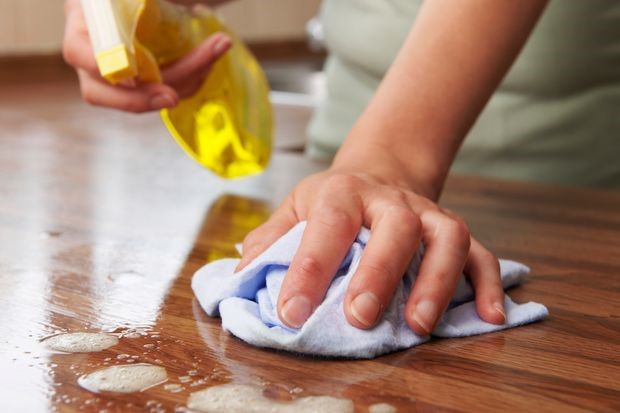
For surface cleaning to kill the coronavirus, look for products that say “disinfectant” on the label and include an EPA registration number.
PHOTO: GETTY IMAGES/ISTOCKPHOTO
For many people, staying safe from the new coronavirus means staying home. But infectious germs can live in your house, too.
To minimize the risk of getting sick, the Centers for Disease Control and Prevention recommend taking action to disinfect high-touch surfaces, such as countertops, doorknobs, cellphones and toilet flush handles, since some pathogens can live on surfaces for several hours.
However, many people don’t disinfect properly, says Brian Sansoni, head of communications for the American Cleaning Institute, a Washington trade group that represents product manufacturers. First, you might need to clean—removing grease or grime—before you disinfect. Second, the disinfectant needs to remain on the surface, often for several minutes, before it dries or is wiped off. “Check the label for wait times to make sure the virus kill is effective,” Mr. Sansoni says.
In recent days, bleach and other cleaning products have been in short supply. Mr. Sansoni says manufacturers have cranked up production to keep up with demand. That said, he cautions against overusing chemical cleaners and, worse, mixing cleaners in hopes of boosting their effectiveness.
“There is no need to panic-clean,” he says. Just read the labels on everyday products to clean and disinfect the right way. “They’ll do what they’re supposed to do.”
Here are some other tips for staying safe at home:
The CDC recommends washing hands vigorously with soap and water for at least 20 seconds. As a backup, use hand sanitizers that are at least 60% alcohol.
The Environmental Protection Agency recently released a list of approved disinfectants to kill coronavirus. For surface cleaning, look for products such as wipes, sprays and concentrates that say “disinfectant” on the label and include an EPA registration number. These are required to meet government specifications for safety and effectiveness.
For a homemade disinfectant, the CDC recommends mixing a quarter-cup of household chlorine bleach with one gallon of cool water.
After disinfecting food-prep surfaces such as cutting boards and countertops, rinse them with water before use.
For laundry, use detergent and bleach (for white loads) or peroxide or color-safe bleach (for colors) to kill germs. (Be sure to read clothing labels to avoid damaging garments.) To boost the effect, some washing machines have sanitize or steam settings that kill germs. Drying laundry on the dryer’s hot cycle for 45 minutes also is effective.
If possible, operate dishwashers on the sanitizing cycle. Machines certified by NSF International, formerly known as the National Sanitation Foundation, must reach a final rinse temperature of 150 degrees and achieve a minimum 99.999% reduction of bacteria when operated on that cycle.
Household air purifiers and filters that advertise the ability to kill or capture viruses can be useful but shouldn’t be a substitute for cleaning. Some purifiers use ultraviolet light, which has been shown to have germicidal effects, but their overall effectiveness can vary depending on their design, according to a 2018 technical summary of residential air cleaners by the EPA. While some filters advertise the ability to capture things like viruses, smoke and common allergens, they don’t necessarily kill microorganisms.
Source: The Wall Street Journal, March 12, 2020 | Beth DeCarbo